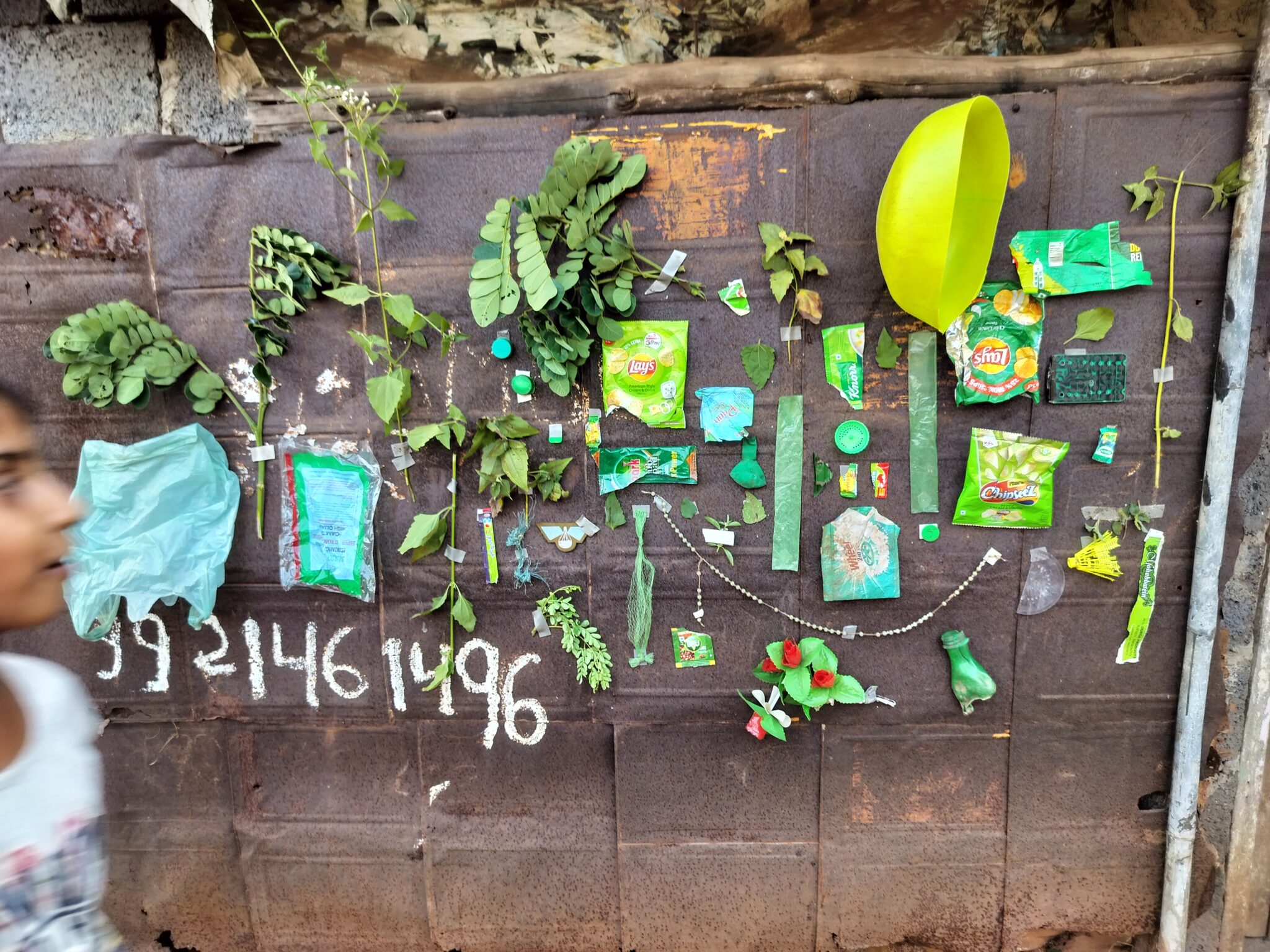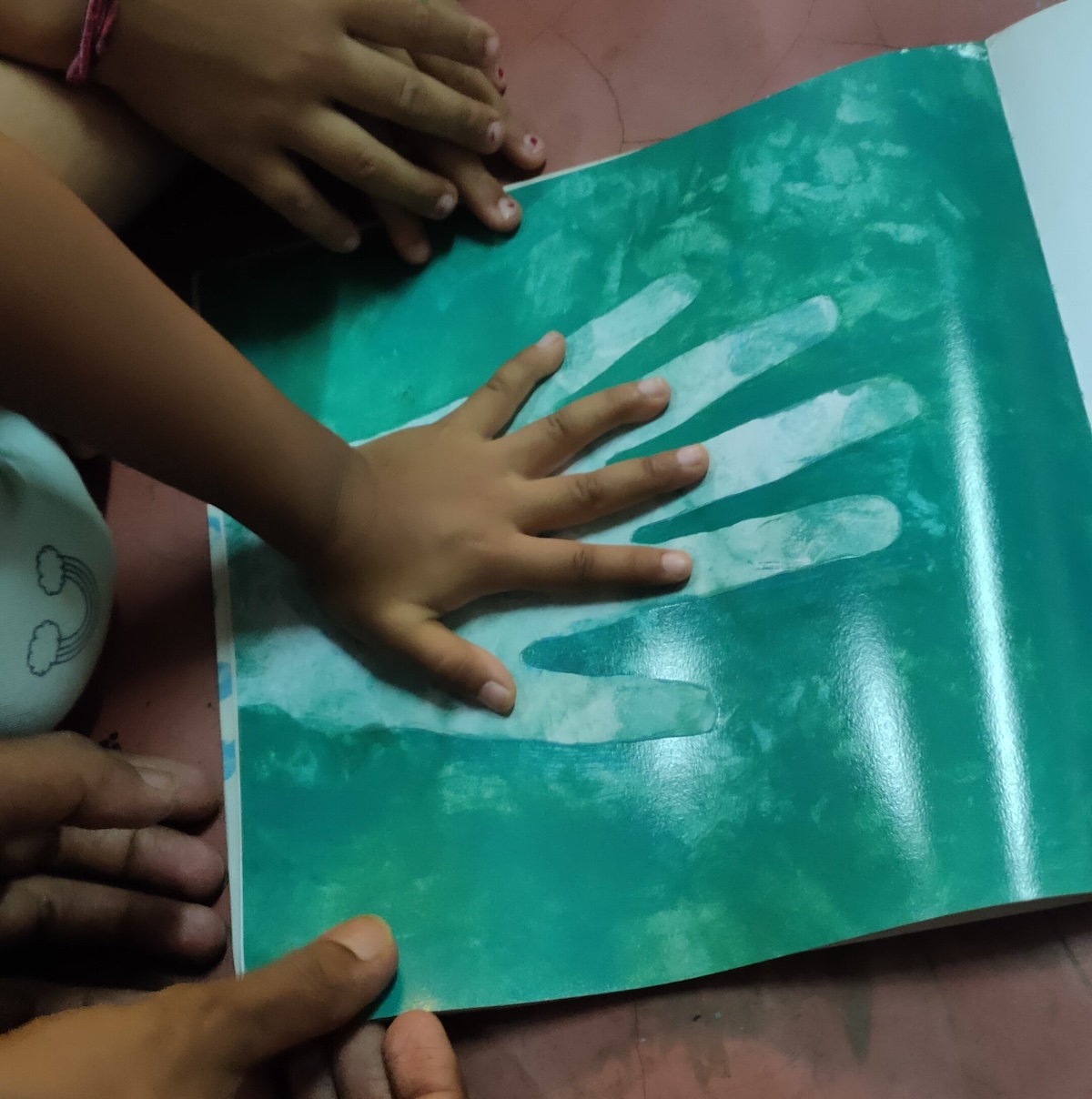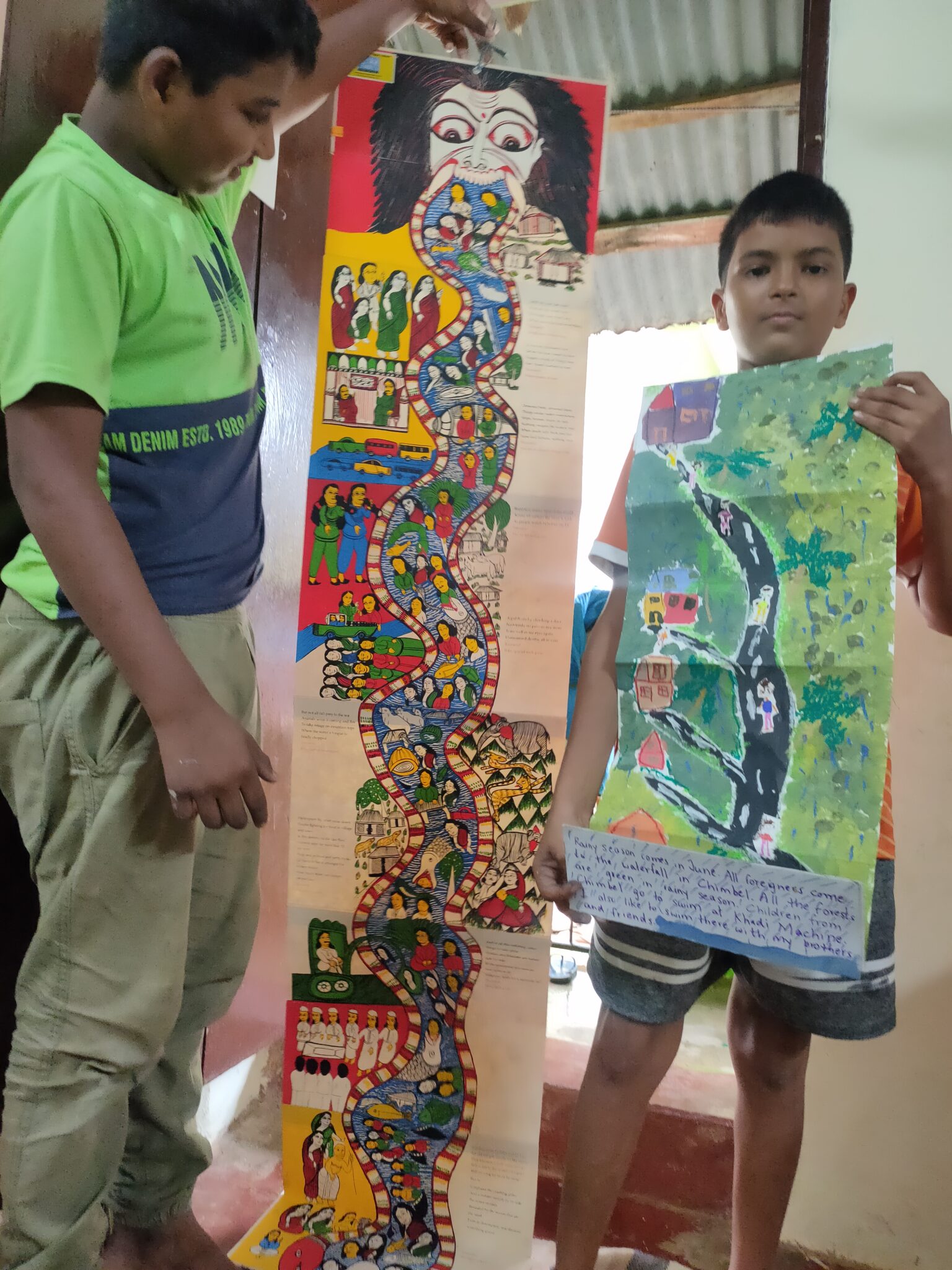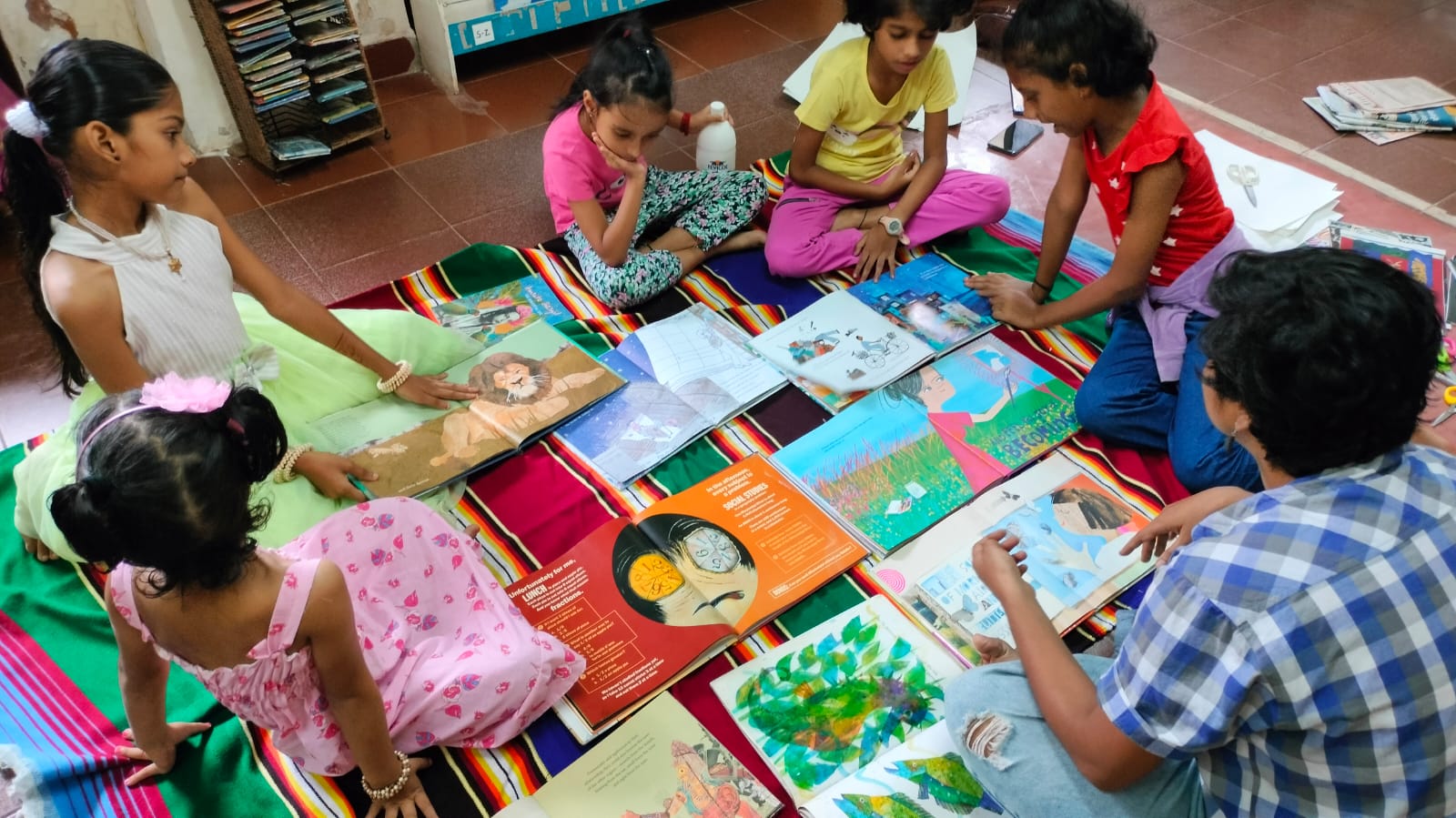Any educator, whether they work in a school or another institution, must have encountered some reluctance within children when it comes to expression through art. The sentiment ‘I cannot draw!’ is easily expressed by children as young as 10 as well as adults. In my practice as a Visual Arts Educator, I too have encountered this sentence many times. This begs the question – Where does this reluctance stem from?
From a very young age, children are excluded from artmaking by systems’ and adults’ expectations of replication. Only that art which is a photographic or perfectly symbolic representation of reality (such as sceneries or the Indian flag) is taught and expected in schools. As such, ‘observation drawing’ focuses on ‘observation’ of certain rules rather than experiencing and sharing of experiences (Atkinson 1966). The Library can counter this and can be a space where children can be offered the freedom to create their own forms of expression and narratives.
I have been fortunate enough to locate my practice in the Bookworm Library, where children’s own voices are encouraged and the facilitator’s role is not to ‘correct’, but to draw out children’s expressions – it is a space which believes in the diversity of narratives. Visual Arts Program sessions are conducted across the Mobile Outreach Program, Libraries in Schools, the Library Program, and with adults as a part of the Professional Development Program.
We usually begin by making and reading abstract art. If the initial cue that children receive upon encountering art is that it can be absolutely anything that they want it to be, that it is only alive through their own lifeworlds reflected into it, it does not push them away. Together, we have created and interpreted abstracts inspired by Mehlli Gobhai, SH Raza, and the book ‘What Colour is the Wind?’ by Anne Herbauts which so beautifully opens up the idea of different abilities and ways to access art, touch being one.
Then we move towards bookmaking and narrative building through visuals. It gives me immense joy to work with children and offer them possibilities of creating and telling stories without having to rely on words, to see them shed the stress of acquired languages and let their and their friends’ articulations of what they have made define the meanings of their creations. We have made various kinds of books – accordion books about nature inspired by The Tree Book by Mehlli Gobhai and Why Aways by Michio Mado and Oscar Bluemner, scroll books about our neighbourhoods inspired by Tsunami by Joydeb and Moyna Chitrakar, hole-y books inspired by The Tale About Moomin, Mimble, and Little My by Tove Jansson, zines, etc. Along with this, we have also created prints, murals, collaborative art pieces, sculptures, collages, and more. We have explored surrealism using the picture book Gruffalo and other books available in the library to speak about our dreams, explored Breaking Moulds: Meera Mukherjee to notice, think about, and express labour seen and done in everyday life through sculpture, and opened up many more such ways for children to look at and speak about themselves and the world around them as they see it.
It is only after doing all this and more, that we approached observation drawing with a group of children at the mobile outreach sites, inspired by the book Ish by Peter H Reynolds, a beautiful book which encourages the reader to not worry about whether something looks exactly right, and to draw anyway. Children seemed to face no resistance within themselves when they looked around and drew a mountain, a broken plastic chair, a water tank, clothes drying on a line on a broken tin home, a broken slipper lying nearby, the tree next to us, and us on our library space on the ground in the middle of all this. It is not that they had made perfect representations of all these things, but that they had not hesitated to attempt it and that they welcomed not only theirs but their friends’ variant interpretations of the same scene. As a part of the Visual Arts Program, we have conducted a few professional development modules for educators to take some of these arts based activities to children they work with, and we have heard from them about shifts that they had noticed among children.
All this and more is enabled uniquely in the library which is a space whose heart is made of stories. Children who come together to listen to and share diverse stories are more likely to find themselves unafraid to tell their own stories when offered the opportunities and the tools. Readers who are used to delving into stories will also be open to exercises of ‘reading’ art. Similarly, engagements with different art forms, movements, and artists can open up deeper connections with library collections and books, as children expand the range of perspectives they are able to hold simultaneously. Bookmaking exercises open up ideas about the book as an object and bring children closer to understanding what goes into building a book and a story, which in turn brings them closer to the books they read. The connection of the library to visual arts is unique in this way.
We hope to be able to take this approach to visual arts in the library to many library educators and hence children. Selection of media plays an important role here, and a library educator must keep the following things in mind while choosing:
- No pencils or erasers; Use paint and soft pastels and other exciting and forgiving media
- Paper sizes – Avoid a4 and ‘official’ sized paper, use squares or other fun shapes
- Incorporate exploration with material, experimentation with different media
Apart from the media, a shift in the educator’s mindset is vital. The following things must be considered while approaching artmaking with children in the library:
- Pose your questions and tasks in a way which allows each child space to bring their own voice to the painting. Avoid copying and replication tasks
- Appreciate and affirm them at each step, set open ended goals, help them get where they want to go
- Allow yourself to think of yourself as an artist and bring the same consideration to children. Explore, experiment, and research with the chosen media before the session – your familiarity will help children.
- Encourage interpretation (reading) – Ask children what they see in their own and each others’ art, what their favourite paintings are, why they like what they like, etc
- Build confidence in expression, then move slowly towards drawing from observation if you wish to do so at all
- Be inspired by your collection!




